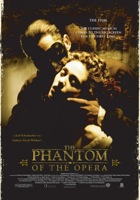Opera
Origin
Italian, work, opera, from Latin, work, pains; akin to Latin oper-, opus
Definitions
- 1: a drama set to music and made up of vocal pieces with orchestral accompaniment and orchestral overtures and interludes; specifically : grand opera
- 2: the score of a musical drama
- 3: the performance of an opera; also : a house where operas are performed
Description
Opera (English plural: operas; Italian plural: opere) is an art form in which singers and musicians perform a dramatic work combining text (called a libretto) and musical score, usually in a theatrical setting. Opera incorporates many of the elements of spoken theatre, such as acting, scenery, and costumes and sometimes includes dance. The performance is typically given in an opera house, accompanied by an orchestra or smaller musical ensemble.
Opera is part of the Western classical music tradition. It started in Italy at the end of the 16th century (with Jacopo Peri's lost Dafne, produced in Florence in 1598) and soon spread through the rest of Europe: Schütz in Germany, Lully in France, and Purcell in England all helped to establish their national traditions in the 17th century. In the 18th century, Italian opera continued to dominate most of Europe, except France, attracting foreign composers such as Handel. Opera seria was the most prestigious form of Italian opera, until Gluck reacted against its artificiality with his "reform" operas in the 1760s. Today the most renowned figure of late 18th century opera is Mozart, who began with opera seria but is most famous for his Italian comic operas, especially The Marriage of Figaro (Le Nozze Di Figaro), Don Giovanni, and Così fan tutte, as well as The Magic Flute (Die Zauberflöte), a landmark in the German tradition.
The first third of the 19th century saw the high point of the bel canto style, with https://en.wikipedia.org/wiki/Gioachino_Rossini [Rossini], Donizetti and Bellini all creating works that are still performed today. It also saw the advent of Grand Opera typified by the works of Auber and Meyerbeer. The mid-to-late 19th century was a "golden age" of opera, led and dominated by Wagner in Germany and Verdi in Italy. The popularity of opera continued through the verismo era in Italy and contemporary French opera through to Puccini and Strauss in the early 20th century. During the 19th century, parallel operatic traditions emerged in central and eastern Europe, particularly in Russia and Bohemia. The 20th century saw many experiments with modern styles, such as atonality and serialism (Schoenberg and Berg), Neoclassicism (Stravinsky), and Minimalism (Philip Glass and John Adams). With the rise of recording technology, singers such as Enrico Caruso became known to audiences beyond the circle of opera fans. Operas were also performed on (and written for) radio and television.
